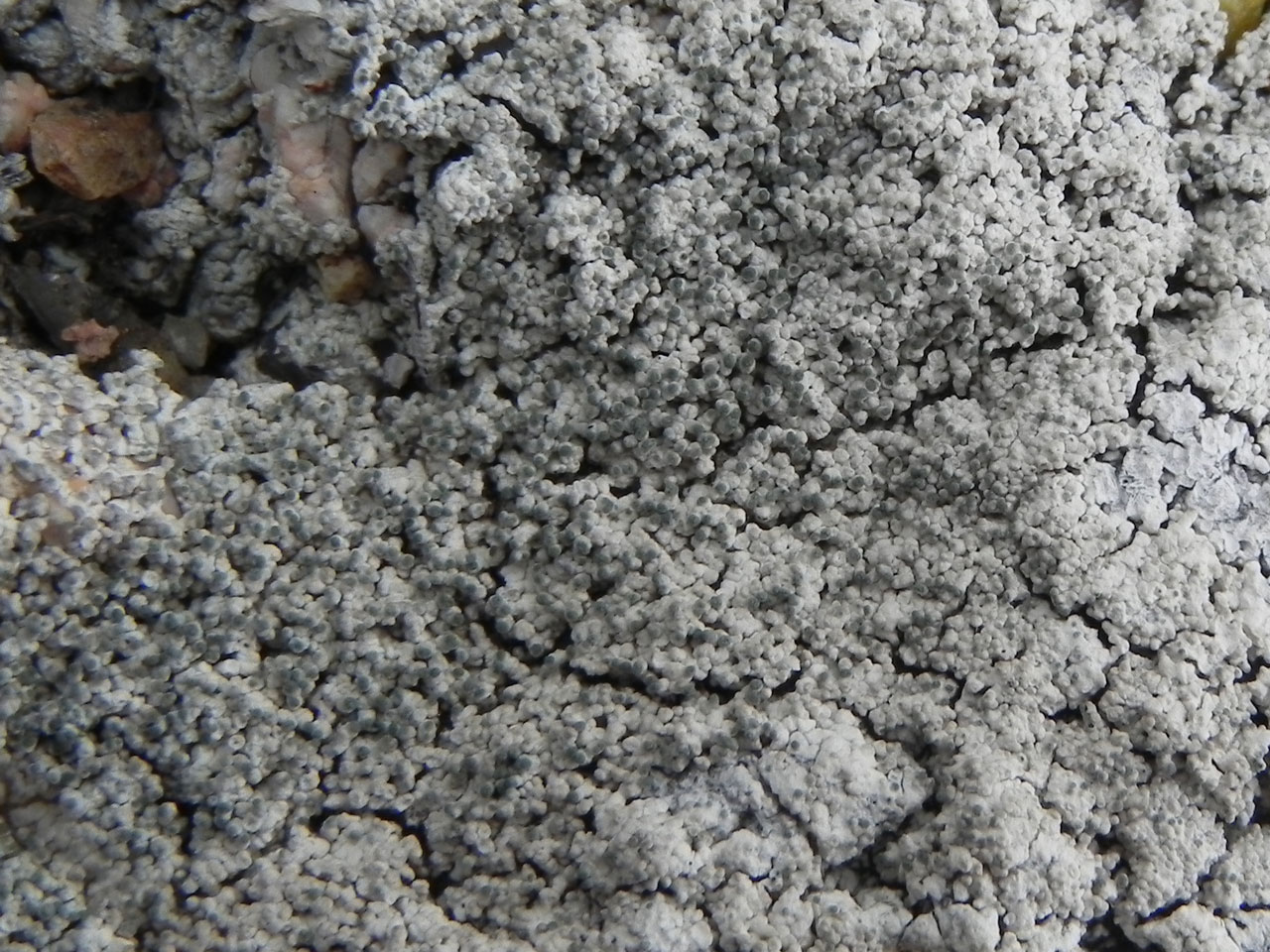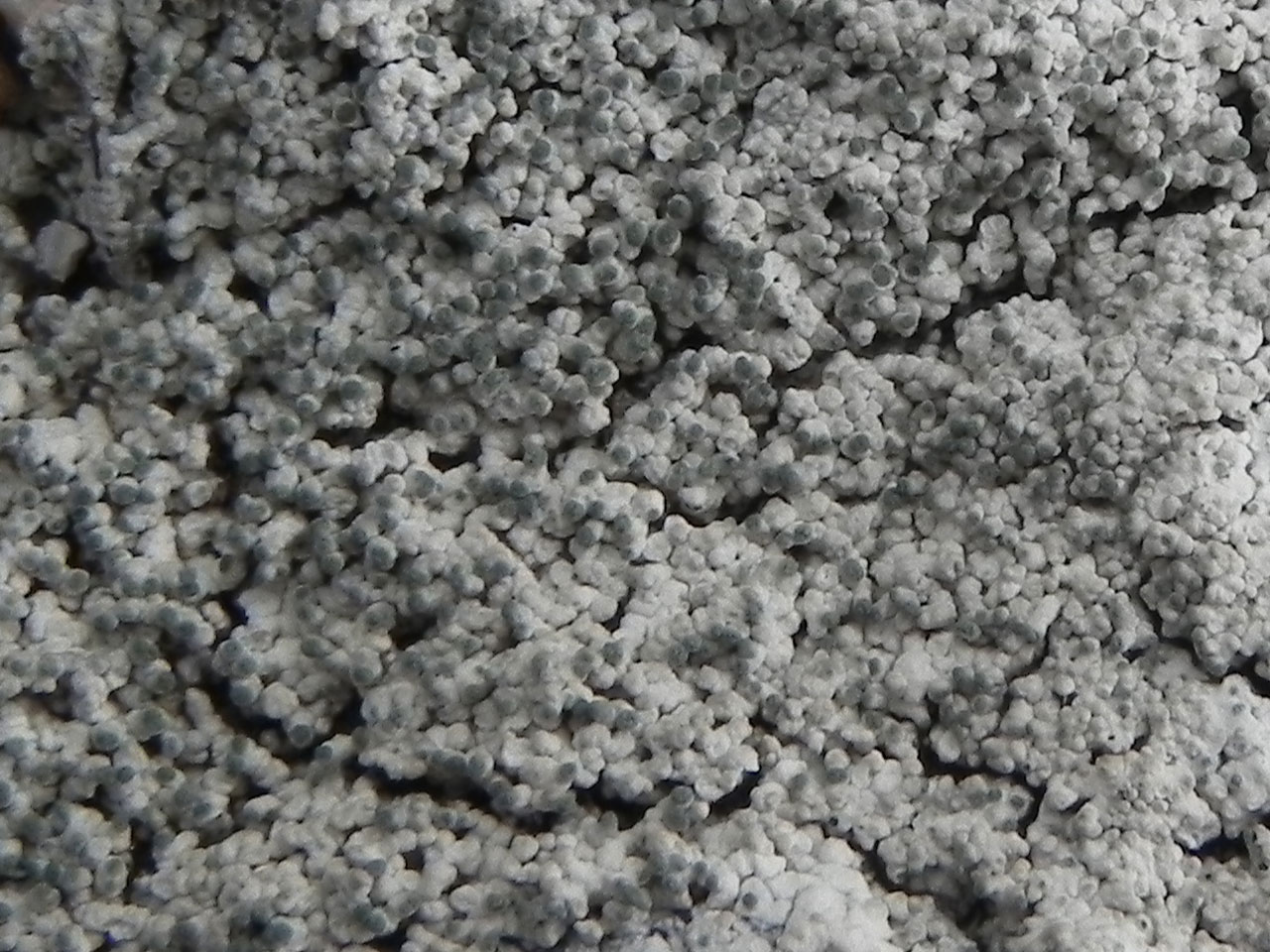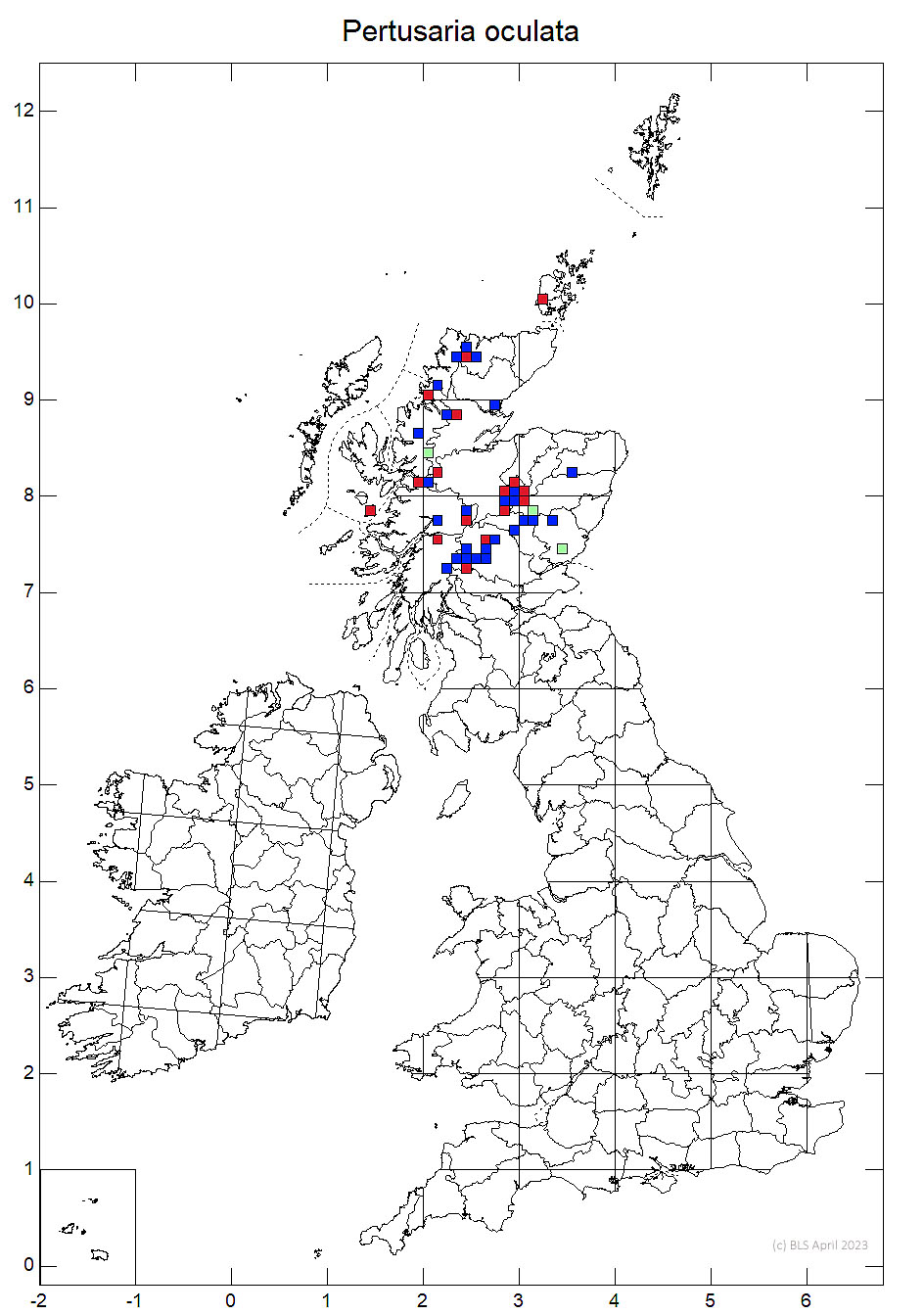Pertusaria oculata
Description from Cannon et al (2021) below.
Thallus thin, inconspicuous, white-grey; isidia abundant, crowded, ± obscuring the thallus, 1–3 mm long and 0.3–0.4 mm diam., at first wart-like, becoming elongate, sometimes branched, cylindrical and often darkened, K+ violet purple at apices, fragile, never producing soralia. Apothecia 1–2 mm diam., rare; disc wide, flat or slightly concave, black, non-pruinose; thalline margin at first regular, smooth and well- developed, later more irregular and excluded; epithecium K+ violet. Asci 8-spored. Ascospores (16–) 23–28 (–30) × 10–14 μm; wall uniform, 1.5–2 μm thick, smooth. Pycnidia occasional, at ends of the isidia; conidia 3.5 × 0.5 μm, short for the genus. Thallus C± pink, K+ yellow-red, KC+ yellow-red, Pd+ rust-red, UV– or ± faint glaucous (fumarprotocetraric and ± protocetraric and ± gyrophoric acids).
The presence of gyrophoric acids distinguishes P. oculata from Lepra dactylina, which also has thicker, white and more robust isidia, 0.4–1 mm diam. and lacks the often darkened, K+ violet purple apices.
On gravelly and moorland soils, decaying vegetation or rarely directly on rock, montane, including areas of late snow-lie.



